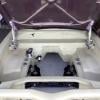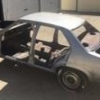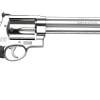There's a fine line between having too little and too much penetration, nothing wrong with what you have there, I'm a pressure welder by trade and it takes a lot of years of welding day after day to control the amount of penetration you get.
The bigger the gap, the more distortion you will get as the weld metal shrinks and pulls to the center, plus more gap means more weld metal.
The only ways to limit the amount of distortion is to keep heat input down as low as possible, this a trade off when good penetration is required.
I myself wouldn't be concerned with the amount of penetration you get as when welding thin metal, the joints is usually fused fully when your travel speed and settings are spot on, if the areas that are fully fused on the other side I would not be concerned at all.
Just remember that heat input is really influenced by "travel time" this means the speed you race along at. I notice you use spot welds, good idea for a novice, but eventually you want too start putting runs down of around 30-50mm, the more experience you get the longer your runs will become.
Get the machine as hot as you can without loosing control or burning holes etc, this is how you achieve max Tavel speed, the sound of the arc should be nice and crisp, really tight sort of thing.
It's hard to pass info on about wire speed and voltage settings, as highly experienced welders generally take no notice of what setting the dials are on, they just use their ears eyes and feel.
Welding I have mastered, eliminating the distortion from welding sheet metal will forever elude me!
Hope this helps a bit
PS: welding vertical down when possible is one of the best ways to weld sheet metal, just remember to "backstep" and Keep it cool!
Oh, one more thing, all welding requires peening where possible.
Best of luck.
Edited by Sunbirdhater, 23 August 2016 - 11:59 PM.
 20160818_162554.jpg 817K
19 downloads
20160818_162554.jpg 817K
19 downloads


















